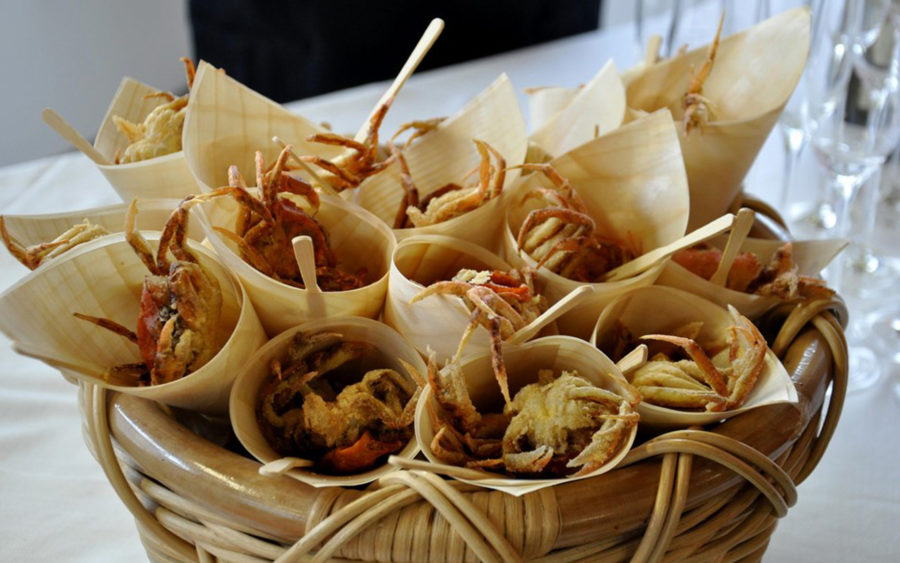“Moeche” is the name that the Venetians give to the local crabs, when they reach the height of the moulting phase, with the loss of their armor and before it is rebuilt, in a few hours in contact with brackish or salty water. This delicacy is also called the “Venetian nugget”.
In the few hours in which the crab changes the carapace, it becomes a precious delicacy, a specialty of Venetian cuisine alone and its history is still very mysterious for many, despite the fact that the “moeche” have experienced a boom in consumption since the last post-war period.
The tradition of “moeche” is present above all in Burano, where several families of lagoon fishermen reside who continue to use the traditional technical equipment of gillnets. In truth, this tradition began only after the middle of the last century because before and for two centuries the “production” of this very strange crab was a professional secret of the fishermen of Chioggia. Currently the production of “moeche” takes place in the northern part of the Venice Lagoon where in recent decades, due to changes in the ancient fishing basins, the techniques used by fishermen have also changed.
The “moeche” fishermen, called “moécanti”, fish armed with a particular net located in the shallows of the lagoon, the “trezza”. They always work with the shutters, called in the past “seràie da seca”, which are no longer fixed. Today with this name the fishermen of Burano mean long barriers of poles and nets (planted at each beginning of the season), to which the funnel traps called “cogòlli” are connected, where they end up trapping fish and crabs in transit. So also the green or common crabs, which are no more than 3 or 4 cm long and easily blend with the color of the muddy bottoms of the lagoon marshes.
The two seasons of production are in the period of Lent (March-April) and during the “fraìma” (October-November). Once captured, the “moeche” are transferred to jute bags which have the purpose of maintaining the right humidity during transport to the processing plants. In the “casòni” or “casòti”, the constructions made by assembling recycled materials, where the local fishermen put their tools and take care of their maintenance, begins the delicate sorting phase which takes place according to the biological state of the crabs and which takes advantage of the great ability of the moécanti. These select and place the crabs next to the mutation, called “spiàntani” in large wooden boxes, half submerged, called “vièri”, where in a short time they will become “moeche”. In autumn the female crab, full of coral eggs, is called “mazaneta”.
The soft and precious meats of the “moeche” lend themselves to being prepared in the most varied ways and in Venetian taverns it is increasingly common to find different and imaginative recipes, as well as expensive, even if the most traditional and delicious way to taste this delicacy continues to be that to fry them in a simple egg and flour batter.
Being the “moeche” exclusively in the waters around Venice, you won’t find these deep-fried soft shell crabs on a menu in any other part of the world. They are an authentic Venetian food delicacy!






